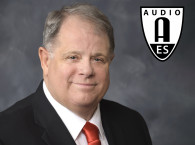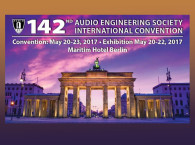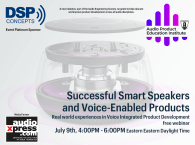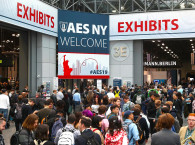
Highlights are set to include the following:
On Thursday, October 17, the session “Circles of Confusion” will feature panelists Sean Olive (Harman International) and Susan Rogers (Berklee College of Music) alongside moderator Thomas Lund (Genelec). The session brief asserts that circles of confusion in pro audio are replacing technical limitations with cognitive limitations. Further, without proper anchoring of spectral balance and level, drifting over time is foreseeable in self-referenced systems, thereby putting legacy recordings at the risk of sounding dated for no good reason. The panel will discuss monitoring requirements that stand the test of time, recent studies on active sensing, variation in perception between listeners and “slow listening.” Also discussed will be a possible revision of ITU-R BS.1116.
Expanding on the topics discussed in “Circles of Confusion,” “Circles of Excellence” will take place the next day, on Friday, October 18. This panel addresses the topics from a more practical perspective. Thomas Lund again serves as moderator, alongside panelists Florian Camerer, ORF (Austrian TV and European Broadcasting Union), Bob Katz (Digital Domain Mastering) and George Massenburg (Schulich School of Music at McGill University, and Centre for Interdisciplinary Research in Music Media and Technology [CIRMMT]). The experts on the panel will try to separate the facts from the myths surrounding recording, monitoring and reproduction, and explain which of the elements they have found most essential in their work to make it stand the test of time.
Also on Friday, “Listening Tests - Understanding the Basic Concepts” will be presented by Jan Berg (Luleå University of Technology - Piteå, Sweden). Listening tests are important tools for audio professionals as they assist our understanding of audio quality. There are numerous examples of tests, either formally recommended and widely used or specially devised for a single occasion. In order to understand listening tests and related methods, and also to potentially design and fully benefit from their results, some basic knowledge is required. This tutorial aims to address audio professionals without prior knowledge of listening test design and evaluation with the fundamentals of what to ask for, how to do it, whom to engage as listeners, what sort of results that may be expected, and additional related issues.
For more information on the entire program for the Acoustics & Psychoacoustics Track, visit www.aes.org/events/147/acousticssessions/. The Acoustics & Psychoacoustics is open to attendees with an All Access badge, available through Monday, October 14 at 11:00 pm EDT at Advance Registration discount pricing, with AES Members and Students receiving significant savings.
Visit aesshow.com now to register. Use the Exclusive VIP Promo Code for FREE Exhibits-Plus registration: AES19AUDIOXPRESS
www.aes.org







